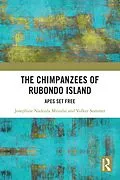How did a random batch of chimpanzees come to populate a small island in Tanzania where apes had never lived before? Combining information gathered from fieldwork, laboratory and archival research, this book tells the unique story of chimpanzee babies taken from their forest homes in West-Central Africa and sold to European zoos and circuses, to then be shipped to Lake Victoria and set free on Rubondo Island. These founder animals learnt what to eat, how to build nests, to breed and raise young - ultimately forming a chimpanzee-typical fission-fusion society that today is thriving. The authors compare the ecology, behaviour and genetics of the Rubondo population with communities of wild chimpanzees, providing exciting insights into how our closest relatives adjust to changing environments. At the same time, a reconstruction of the historical context of the Rubondo experiment reflects on its chequered colonial heritage, and the introduction is viewed against current threats to the survival of apes in their natural habitats. The book will be of interest to scholars and professionals working in primatology, animal behaviour, conservation biology and postcolonial studies.
Autorentext
Josephine Nadezda Msindai obtained a BSc in Biological Sciences from King's College London (2005), an MSc in Primate Conservation at Oxford Brookes University (2008) and a PhD in Anthropology from University College London (2018). The Chimpanzees of Rubondo Island is based on her doctoral work at UCL that included almost two years of field research in Tanzania.
Volker Sommer is Professor of Evolutionary Anthropology at UCL,UK. He obtained his PhD in Anthropology at Göttingen University (1985) and has conducted extensive primatological field studies in India (since 1981), Thailand (since 1984) and Nigeria (since 1999).
Klappentext
This book tells the story of a group of chimpanzees taken from the wild forests of West-Central Africa, about half a century ago, to live in zoos and then to be released from captivity in Europe onto a forested island on Lake Victoria, Tanzania. The authors combine information gathered from extensive fieldwork, laboratory and archival research. Originating from a small number of founder animals, the chimpanzee population on Rubondo island today is thriving. The authors situate their wild lives within the ecological context of the island and describe the ranging behaviour of the apes, their fission-fusion-society, the architecture of their night nests, and their diet and gut microbiome. A comparison of the ecology, behaviour and genetics of the Rubondo apes with other communities of wild chimpanzees provides exciting insights into how our closest relatives adjust to changing environments. At the same time, a reconstruction of the historical circumstances that led to the Rubondo experiment reflects on its chequered colonial heritage, and the operation is contextualised in the light of current threats to the survival of apes in their wild habitats. The book will be of interest to scholars and professionals working in primatology, animal behaviour, reintroduction and conservation biology.
Inhalt
Introduction
1 Creating a Wilderness. The Making of an Island National Park
2 The Founder's Odyssey. Captured, Caged, Released
3 Rubondo Island. Weather, Forests, Wildlife, Humans
4 Bound to be Wild. Sociality and Ranging
5 Embedded. Mastering a New Environment
6 Apes in the Anthropocene. Lessons from a Maverick Release?
Bibliography
Appendix: Publications about Rubondo Island, Its History and Wildlife
